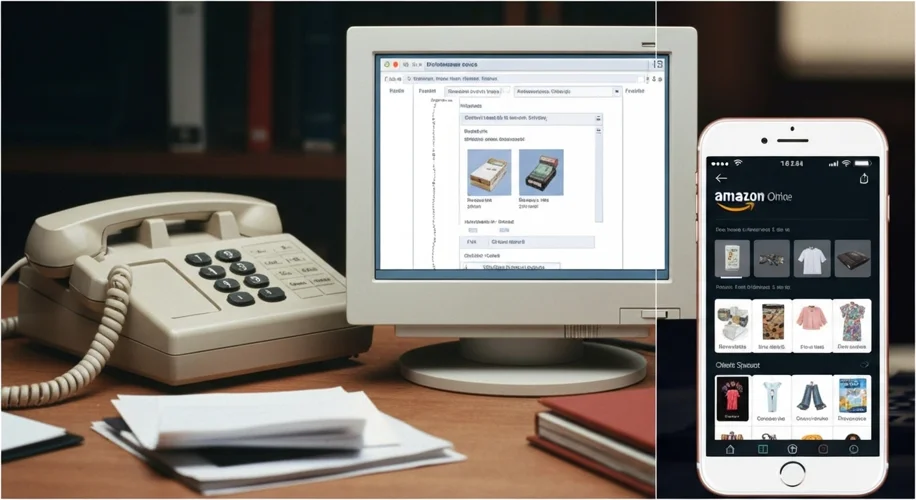In the annals of commerce, few transformations have been as rapid and profound as the birth of e-commerce. While today we navigate a world saturated with online marketplaces and digital storefronts, the seeds of this revolution were sown decades ago, in an era of dial-up modems and nascent computer networks. It’s a story that begins not with sleek interfaces, but with bold experiments and the quiet hum of innovation.
Long before the ubiquitous Amazon smile, there were pioneers who dared to imagine a world where goods could traverse the digital ether. The concept of “electronic shopping” wasn’t born with the World Wide Web. As early as the 1970s, visionary thinkers were conceptualizing ways to use telecommunications for commercial transactions. One of the earliest, albeit primitive, forms of e-commerce emerged in the early 1980s with systems like Videotex and its French counterpart, Minitel. These early networks allowed users to access information services, make reservations, and even conduct simple transactions through their televisions or dedicated terminals. Imagine a world where ordering a pizza involved typing cryptic commands into a bulky keypad, a far cry from the point-and-click ease of today.
The real groundwork, however, was laid in the burgeoning computer networks of the late 1980s and early 1990s. In 1990, a pivotal moment arrived with the launch of The Globe and Marketplace, two of the earliest platforms to offer online shopping. These were not grand, sprawling digital malls, but rather ambitious attempts to create virtual spaces where businesses could list products and consumers could browse and purchase them. They represented a fundamental shift, a belief that the nascent internet could be more than just a tool for academics and military personnel; it could be a marketplace.
Yet, these early ventures faced immense hurdles. The internet was slow, expensive, and largely inaccessible to the average person. Security was a significant concern; the idea of entering credit card details online seemed fraught with peril. Most people were still skeptical about the reliability and safety of these new digital avenues. It was like trying to build a bustling bazaar in a quiet, sparsely populated village – the potential was immense, but the infrastructure and user base were not yet fully developed.

Amidst this landscape of hesitant innovation, a visionary named Jeff Bezos began to formulate a plan. In 1994, he famously left his lucrative Wall Street job to start a company selling books online. Bezos recognized the internet’s explosive growth potential and identified books as an ideal product: relatively inexpensive, universally desired, and easily cataloged. His venture, Amazon, was born out of a garage in Bellevue, Washington, with a simple yet powerful mission: to be “Earth’s biggest bookstore.”
The early days of Amazon were a testament to perseverance. Bezos and his small team worked tirelessly, packing orders themselves and navigating the complexities of online transactions. The website was basic, functional rather than flashy, but it offered a catalog far vaster than any physical bookstore could hope to provide. The initial public offering (IPO) in 1997 marked a turning point, injecting capital and legitimacy into the nascent e-commerce industry. It signaled to the world that this new way of shopping was not just a novelty, but a burgeoning economic force.
The pre-millennium era also saw the rise of other significant players and technologies that paved the way for e-commerce as we know it. Companies like eBay, founded in 1995, introduced the concept of online auctions, creating a dynamic marketplace for everything from collectibles to used goods. Secure online payment systems, like SSL (Secure Sockets Layer), became more widespread, addressing the critical issue of transaction security.
The cultural shift was palpable. As more people gained access to the internet and became comfortable with online interactions, the barriers to e-commerce began to crumble. The convenience of shopping from home, the ability to compare prices easily, and the sheer novelty of it all captured the public’s imagination. It was a gradual evolution, a slow build-up of trust and technological capability.
The rise of Amazon, in particular, was not merely about selling books. It was about building a robust logistical infrastructure, investing in customer service, and continuously innovating. Bezos understood that success in e-commerce required more than just a website; it demanded efficiency, reliability, and a deep understanding of consumer behavior. The company’s expansion into diverse product categories, its development of sophisticated recommendation algorithms, and its relentless focus on customer satisfaction laid the foundation for its future dominance.
Looking back, the birth of e-commerce is a fascinating chapter in our technological history. It’s a story of early adopters, daring entrepreneurs, and the gradual, often hesitant, embrace of a world-changing technology. From the clunky interfaces of Minitel to the vast digital aisles of Amazon, this journey demonstrates humanity’s enduring quest for convenience and connection, reshaping how we buy, sell, and interact with the global marketplace. The echoes of those early online transactions continue to resonate, shaping the very fabric of our modern lives.

